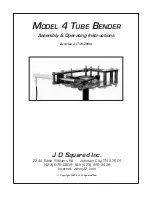
ALMAG-01
Operating manual Page 49
BRONCHIAL ASTHMA
Bronchial asthma
is a chronic recurrent disease with attacks of dyspnea or the
asthmatic status because of a bronchus spasm, mucous edema, increased discharge of
bronchial mucus. Bronchus spasm is provoked by nonspecific allergens: the pollen of
flowers, grass, trees, home dust, cats and dog wool etc., food allergens (eggs, citrus, fish,
milk etc), medicine (aspirin, analgin etc.), mechanic and chemical things (metal, wood,
cotton, silicate dust, acid and alkaline, smoke), physical and meteorological factors,
neuropsychic influence, both tick`s, insects allergens, neuropsychic influence.
Symptoms and clinical course:
Bronchial asthma has intrinsic and atopic clinical
course with an attack of asthmatic fit of different intensity, the patient status may be
satisfactory in the period between attacks. The attack may start with rich flow of liquid
from nose, strong cough, difficult remove of sputum, shortness of breath.
Breath is short, outward breath is difficult, slow and spasmodic following with strong,
whistling wheeze which can be heard at a distance. The patient takes forced position to
make the breath easy. The face is puffy and pale. Pulse is increased.
Among the other methods of treatment, physiotherapeutic treatment is widely applied
at all stages: inhalation, acupuncture, travelling pulsed magnetic field etc.
Curative effect.
The purpose of treatment with
traveling pulsed magnetic field: to
render antispasmodic effect; to increase microcirculation in a pulmonary tissue, including
a bronchial tree, to improve discharge (remove) of bronchial mucus
Procedure
. Procedure with
the help of
ALMAG device should be carried out after
attack remove or in the period of attack subside.
Action is carried out on area of lung – 15 minutes (see fig.26), on the area of adrenal
gland – 10 minutes. (see fig. 22)., once a day. The course of treatment – 18-20 days.
DISEASES OF A GASTROINTESTINAL TRACT
SUBACUTE AND CHRONIC PANCREATITIS
Chronic pancreatitis
- the inflammatory disease of a pancreas resulting in
progressing decrease of external and internal secretion functions. Risk factors leading to
the disease progress are: alcoholism, illness of bile passages, stomach and duodenum,
toxic effect – chemical substances (agents) , including medical drags, malnutrition.
Symptoms:
at chronic clinical course of disease: pain syndrome following with
sickness, vomiting, belting pain, epigastric pain. At acute clinical course of disease there
may be intoxication , the high rise of the temperature. The disease complication –
pancreatic diabetes.












































